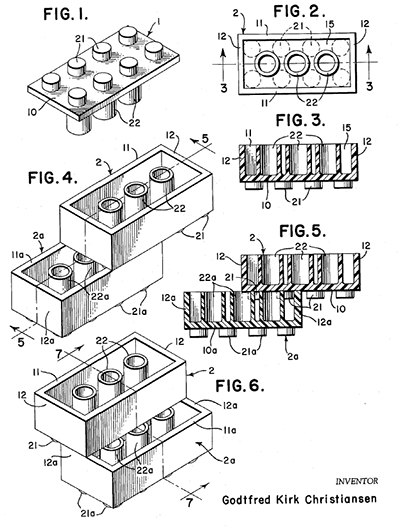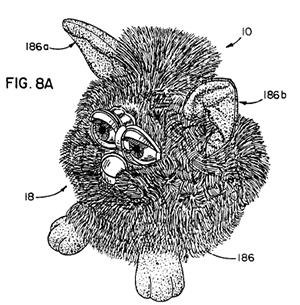‘Tis the season for holiday cheer and shopping for the perfect holiday gifts. With the holiday season seeming to start earlier each year, there is an increased range of incentives and sales to get consumers to open their wallets. In fact, about thirty percent of annual retail sales occur between Black Friday and Christmas,1 and for some retailers that percentage is even higher. As a result, the holiday shopping season is crucial for consumer product manufacturers and retailers alike to capitalize on the surge in consumer spending. This may be best evidenced by the one or two toys that become the “must have” gifts for children, or for young at heart adults, each year. These “must have” toys often lead to desperate last minute shoppers paying above list price to make sure their loved one is not disappointed on a special holiday. Behind all the holiday hustle and bustle is the intellectual property (IP) protection that assists in the commercial success of these sought after products. A combination of copyright, trademark, and patent protections can be utilized by manufacturers and retailers to keep the toys from being copied by competitors trying to cash in on the frenzy and popularity of an item. Getting into the spirit of the holiday season, let’s take a look at the patents behind some of the most successful toys and how those patents helped protect the sale of these toys during the holiday season and beyond.
Before we delve into the toys, here is a quick introduction into the patent process. First, an inventor files a patent application with the United States Patent and Trademark Office (USPTO) for their invention. The application must describe what the invention is, how the invention works, and how to make the invention. If the invention discussed in the patent application is determined to be novel/unique and not obvious by the USPTO, then the inventor will be granted a patent. The granted patent offers the inventor a set of exclusive rights to make and/or sell the patented invention for a limited period of time, typically twenty years from the time of filing the patent application. The trade-off for the inventor getting a monopoly on the invention, as described in the disclosure of the application and granted patent, is the publication of that patent. During that limited period of time, the owner of the patent can produce and/or sell the patented product without having to worry about others copying and stealing their market share. In addition to being the only party able to make and/or sell the product, there are several benefits to having patent protection. The companies associated with the below patents demonstrate their ability to establish themselves as the go-to brand (also protected through trademarks) for their respective products, while maintaining their product’s success after the expiration of the patents.
Shown below are drawings that you may recognize as Lego® blocks. These drawings are from U.S. Patent Number 3,005,2822 filed by Lego. Lego applied for the patent in 1958 and it expired over 35 years ago, but for a limited period of time following the granted patent in 1961, Lego owned exclusive rights to manufacture and sell these toy building brick designs.

While other companies (e.g., Mega Bloks®) have entered the market using similar plastic block designs as Lego, Lego remains the go-to brand in the marketplace. Much like Kleenex is synonymous with tissues, these plastic building blocks are commonly referred to as Lego blocks, regardless of the actual brand of plastic building blocks. To date, Lego has produced and sold over 600 billion Lego parts. The above-noted patent, in addition to other patents filed by Lego, has contributed to Lego’s emergence as the globally leading brand of building blocks.
Now we will jump from the expired patent for Lego building blocks to an active U.S. Patent (6,544,098) for a technologically advanced interactive toy commonly known as Furby. The Furby was one of the hottest toys in the late nineties and was one of the most technologically advanced toys at the time. In the last few years, the Furby brand has experienced a resurgence, and its technology remains protected by this granted patent.
The first image below (FIG. 8A) is from the Furby patent and shows the Furby toy as a finished product. The second image below (FIG. 10) shows the inner workings of the Furby. In particular, the figure shows the individual mechanical parts of the toy. Anyone would be able to know how Furby is made by viewing FIG. 10 while reading the related discussion in the patent, without having to take the toy apart. This notion is the cornerstone of patent law: inventors are provided with a limited monopoly in return for disclosing their technology to the world, thus encouraging innovation.


As a bonus, can you identify the invention that was derived as an alternative to rubber and was subsequently turned into a toy? This invention was originally designed as an alternative for rubber due to shortages in availability during World War II, but has become more successful as a toy. It can still be found in stores today and is a popular novelty gift. The patent is for a process of making puttylike elastic plastic, siloxane derivative composition containing zinc hydroxide (U.S. Patent No. 2,541,851). The patent details the combination of compounds that make a putty-like substance that exhibits a high degree of elasticity or bounce. If you guessed that the patent was for “silly putty”, then you are correct! This rubber replacement was later turned into a novelty item after a toy store owner discovered the substance and decided to package and sell the product in small eggs. The rest is history!
The patent protection alone did not make the above-mentioned products successful, but the patents did contribute to the overall commercial success of the toys, and to the longevity of the brands responsible for manufacturing and selling these toys. The patents enabled inventors and companies to build lasting brands while capitalizing on unrivaled sales of their innovations for a predetermined period of time (currently 20 years). The descriptions of these patents are meant to provide some insight into the IP protection behind consumer products, and to demonstrate the importance of patent protection for such products. Additionally, now you will have some food for thought the next time you see that patent pending stamp on the bottom of a toy, or when you need something interesting to discuss while waiting in line to purchase that special gift. Happy Holidays!
For more information, please contact Lisa Warren.
2. As you may have noticed, at some point or another, it is common to find patent pending or patented stamp located on the bottom or other location on the product. That stamp typically includes a number which can be used to quickly look up the patent application or granted patent for that product. If interested, probably the simplest way to lookup these numbers is to visit https://patents.google.com/, type the number in the search field, and hit search. The interesting thing about looking up these patent numbers is being able to read how the invention works and/or is created.



